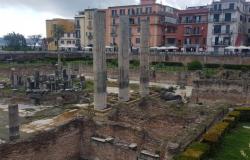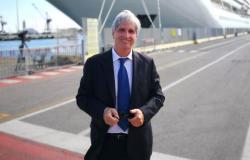Reggio Emilia It started with a large turnout of the public the XIX edition of European Photographyorganized by Palazzo Magnani Foundation and the Municipality of Reggio Emilia, with the contribution of the Emilia-Romagna Region. After the opening days, the exhibitions can be visited until June 9th. The title which is also the theme of the event, “Nature loves to hide”, dates back to Heraclitus, as underlined by Tim Clark, artistic director of the event together with Walter Guadagnini and Luce Lebart: it communicates a sense of mystery and at the same time recalls the power of a nature which, in concealing its essence from our eyes, increasingly paradoxically reveals it in destructive ways. The topic was addressed from various aspects: from the study of clouds to the defense of urban gardens to the study of the populations that inhabit the Arctic; they range from Siberia to Mexico, from India to South Africa. The urgency to tell also touched on topics connected to real investigations such as the exploitation of resources required by bitcoin.
Cloisters of San Pietro
The spaces of Cloisters of San Pietro they host the largest number of exhibitions, which this year are ten. We start on the ground floor with an exhibition that “stops” the clouds: it is the collective “Sky Album. 150 years of capturing clouds” from the Archive of Modern Conflict. We start from the dawn of photography: from the French Gustave Le Gray to the Italian Mario Giacomelli, then the American Edward Steichen up to the two contemporary artists called to create two installations, the Finnish Anna Ninskanen and the British Kalev Erickson.
On the first floor, “Within Sight”, an exhibition project by Helen Sear which explores our relationship as human beings with nature through the recurring theme of trees, inviting the viewer to reflect on the elements connected within wooded landscapes and within oneself, involving all body in the act of looking.
Yvonne Venegas with “Sea of Cortez” traces an intergenerational story in balance between the experience of her family – who lived in the copper mines of Santa Rosalia, in Baja California, at the beginning of the twentieth century – and that of a generation that exploited the territories around the Sea of Cortez.
The Indian photographer Arko Datto brings to the attention of visitors the looming issue of climate catastrophe and the refugees it generates, through a photographic trilogy that has been ongoing for nine years. His images are truly evocative – real illuminated boxes – which are part of the project “The Shunyo Raja Monographies” and are dedicated to the territory of the Bengal Delta, among the epicenters of climate change.
Following Matteo de Mayda, a Venetian photographer, exhibits a composite installation that is part of the project “There’s no calm after the storm”, in which he investigates the long-term and less visible impacts of storm Vaia, which hit North-East Italy at the end 2018; if storms have always been part of the history of forests, global warming is expanding their scope and frequency. Jo Ractliffe’s exhibition, “Landscaping”, is dedicated to the South African landscape captured during her car journeys along the south-west coast. In black and white shots, Ractliffe reflects on the concept of landscape. With the term landscaping, the artist tries to convey the idea of landscape as something active, capable of preserving the memory of the past. Of profound interest is “Permafrost”, the work by Natalya Saprunova which tells the story of the life of the populations of the far north of the Asian continent. The soft colors of her shots reflect the anxiety of these communities, witnesses of the symbiotic relationship with an extreme nature which today is put at risk by the consequences of industrialization. The American photographer Terri Weifenbach in “Cloud Physics” explores the interconnection between clouds and the intimate forms of biological life, while Lisa Barnard with “An Act of Faith: Bitcoin and the Speculative Bubble” leads to reflection on the creation of bitcoins, assets digital which, although immaterial, require an enormous environmental effort. The British photographer documents the exploitation of geothermal energy in Iceland, necessary to support the mining process: Icelandic temperatures mean that the heat masses generated by the hardware involved are significantly reduced, helping to maintain an obedient microclimate.
Bruno Serralongue dedicates “Community Gardens of Vertus, Aubervilliers” to the fight that some gardeners are carrying out to oppose the demolition of over 4,000 square meters of vegetable gardens, in favor of new constructions for the Paris 2024 Olympic Games.
Palazzo da Mosto
The exposure to is fascinating Palazzo da Mosto “day by day” produced by Fotografia Europea 2024: it bears the signature of Karim El Maktafi who captures various landscapes of the Emilian Apennines, in which he examines the profound and fragile bond between man and nature. Also at Palazzo da Mosto are the projects by Marta Bogdanska and Michele Sibiloni selected by the Open Call jury, among over 500 works. “Shifters” by Marta Bogdanska is a work of archival research and a collection of articles on animal spies in war related to the history of their liberation and their rights. Michele Sibiloni, with “Nsenene” stimulates a reflection on the future of global food by documenting the grasshopper collection activity in Uganda. In the entrance hall, the “Index Naturae” exhibition with 116 photographic books published in the last five years dedicated to nature, curated by Stefania Rössl and Massimo Sordi (North East Mobile Observatory).
© ALL RIGHTS RESERVED






